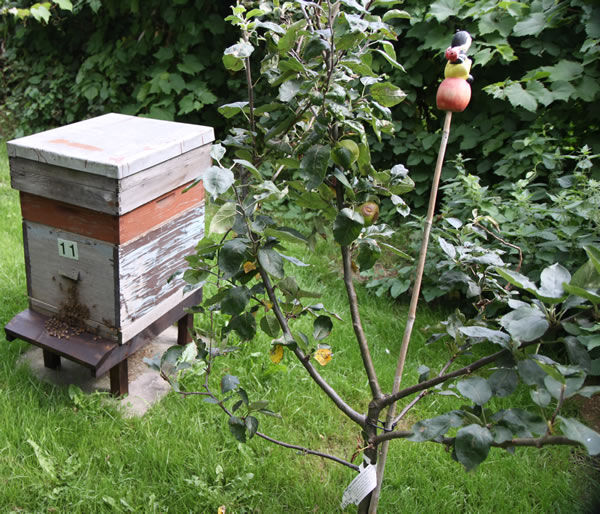Under One Roof: Beehive Management During the Swarming Season in a Single Hive by Nick Withers

Introduction:
All beekeepers wish to be in control of their bees. They will wish for strong healthy hives at the start of the honey flow (whenever that is) so that they can get the best possible honey crop. They will not wish for his colonies to increase in number in an uncontrolled fashion or for swarms of bees to be lost as they take control of the agenda.
In most districts in Britain there is a ‘main’ honey flow in late June and July and colonies should be at their peak by mid June to exploit it fully. Unfortunately the period immediately before the main flow, generally the months of May and June, is the swarming season. This is the period, at the best time of year from the bees’ point of view, when honeybee colonies follow their natural instincts and reproduce by swarming. In nature all colonies of honeybees can be expected to swarm every year, just as most other wild creatures, e.g. frogs, seagulls, badgers breed every year.
Swarming is the division of the colony into two (or more!) parts, with each part having many less bees than the original complement. Coming just before the main flow there is little chance (an early swarm may be OK) for worker bee numbers to recover sufficiently to collect a decent surplus of honey. Usually swarming results in almost complete absence of a crop from the affected hive.
The beekeeper can influence the situation in three ways and take control of it with two of them. If he gets it right he can keep his colonies in one piece during the vital swarming season and reap the rewards by getting his expected honey crop.
The first way is to minimise the factors known to trigger swarming off. He can minimise crowding by giving supers early and ensure all his hives have young queens. He can also buy or breed queens from parent lines with a good reputation for ‘non swarming’. These measures, however, are merely influences for the better and in no way guarantee positive results!
The second way is to observe colonies for signs of swarming and then take control of the situation in a way that keeps all the bees together and maintains the colonies’ growth prior to the honey flow. There are many methods of doing this but the best involve replacement of the swarming queen with a newly mated one, thus minimising the likelihood of any further attempt to swarm. Dealing with colonies after they have started swarming preparations is called swarm control.
The third way is to pre-empt the start of swarming by using a method of management that prevents it. Again there are many methods and again the best involve getting the colonies headed by new young queens. These methods are called swarm prevention.
The following sections give details of swarming natural history and some methods of prevention and control. A feature is that all the operations keep the bees in a single hive, albeit with two entrances at times – hence the title. I have used these methods for swarm control and dealing with swarms for about 10 years. I have not used the similar method for swarm prevention but it seems to be a well tested system in its own right.
Several books on general beekeeping have good sections on swarming. The authors generally suggest the artificial swarm as a method of both control and prevention.


